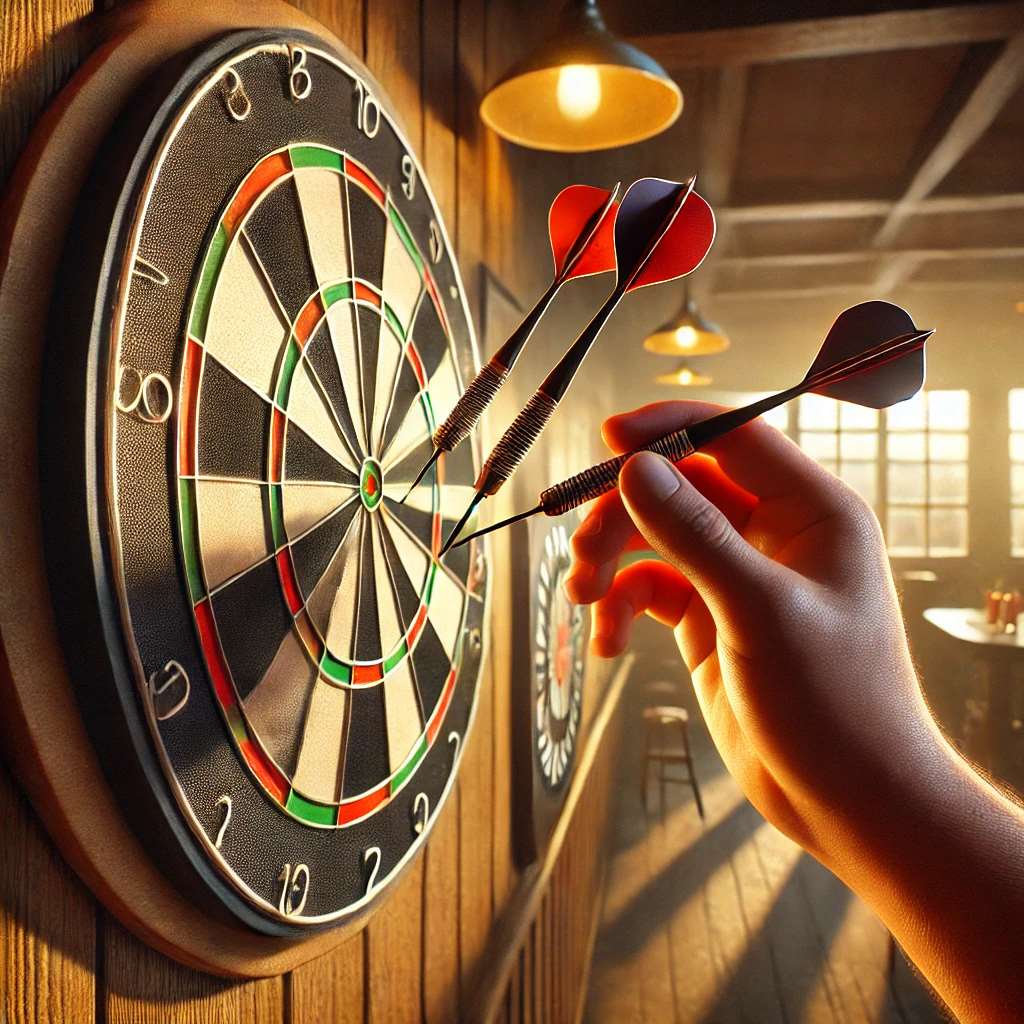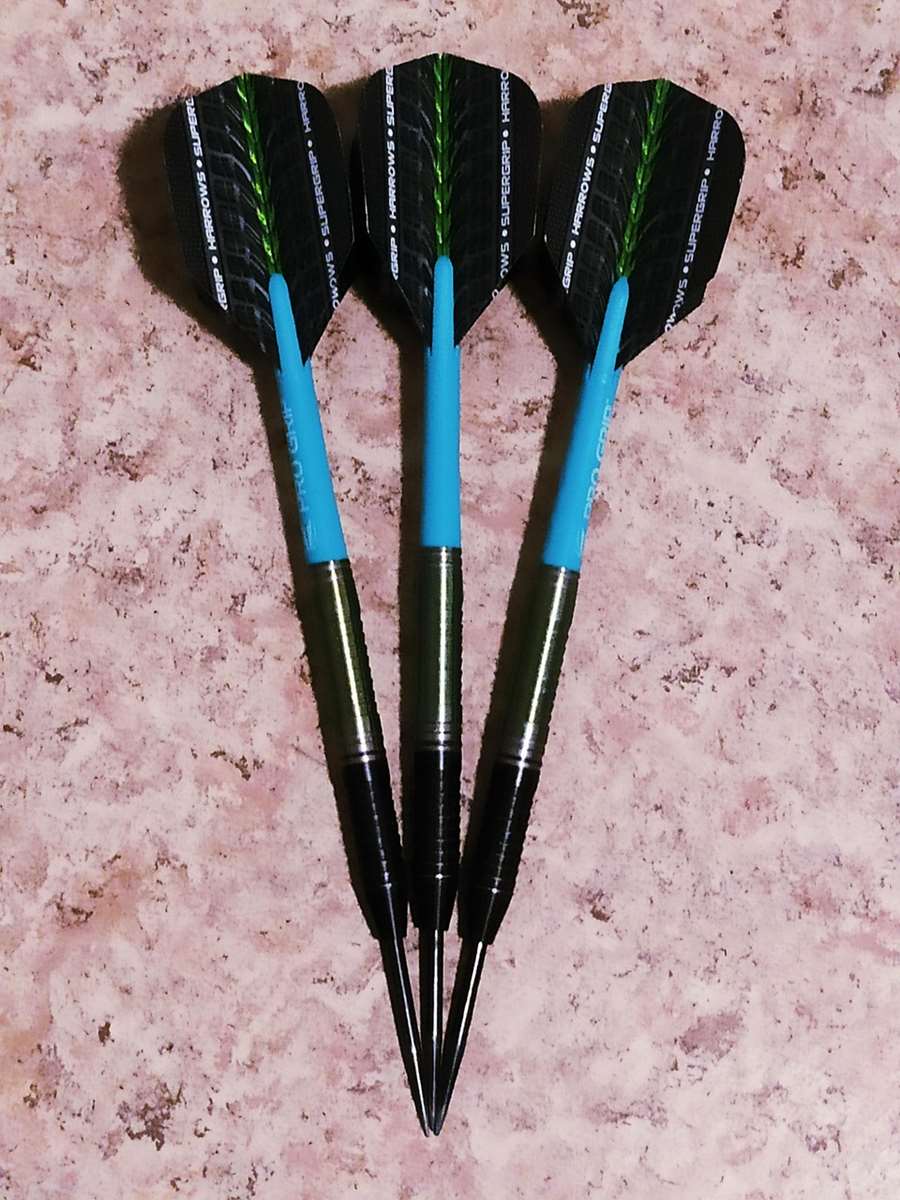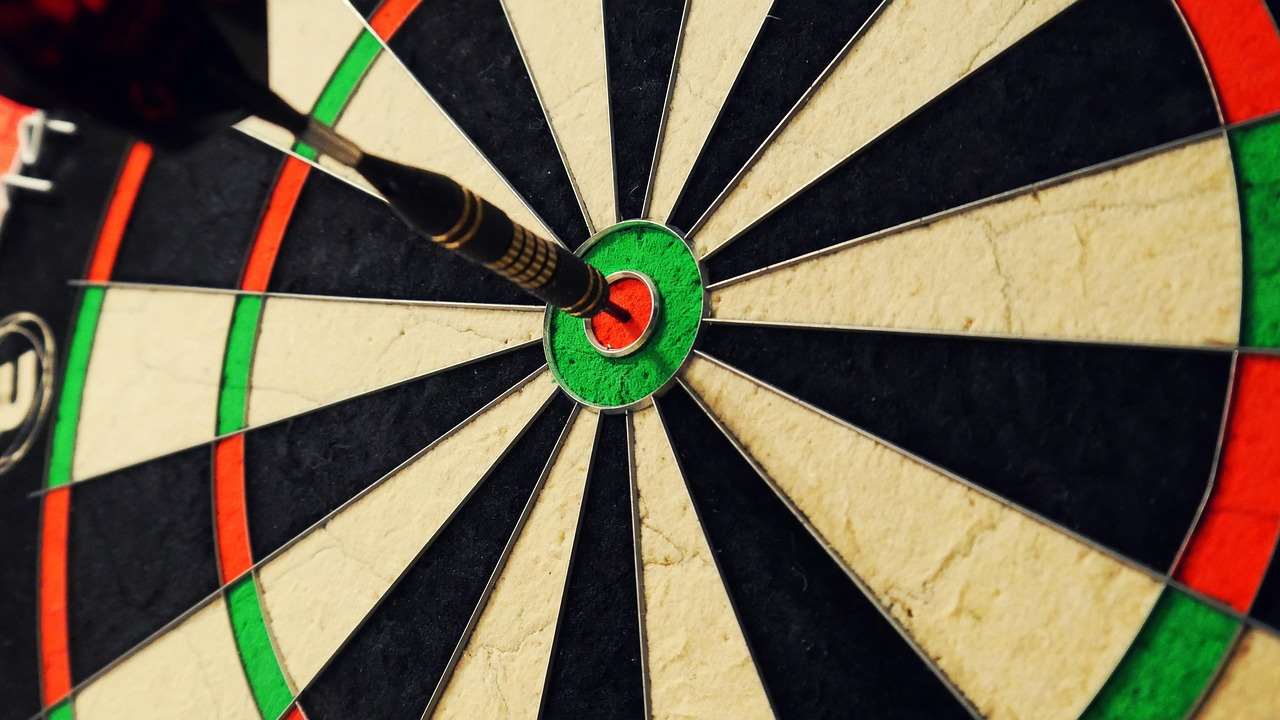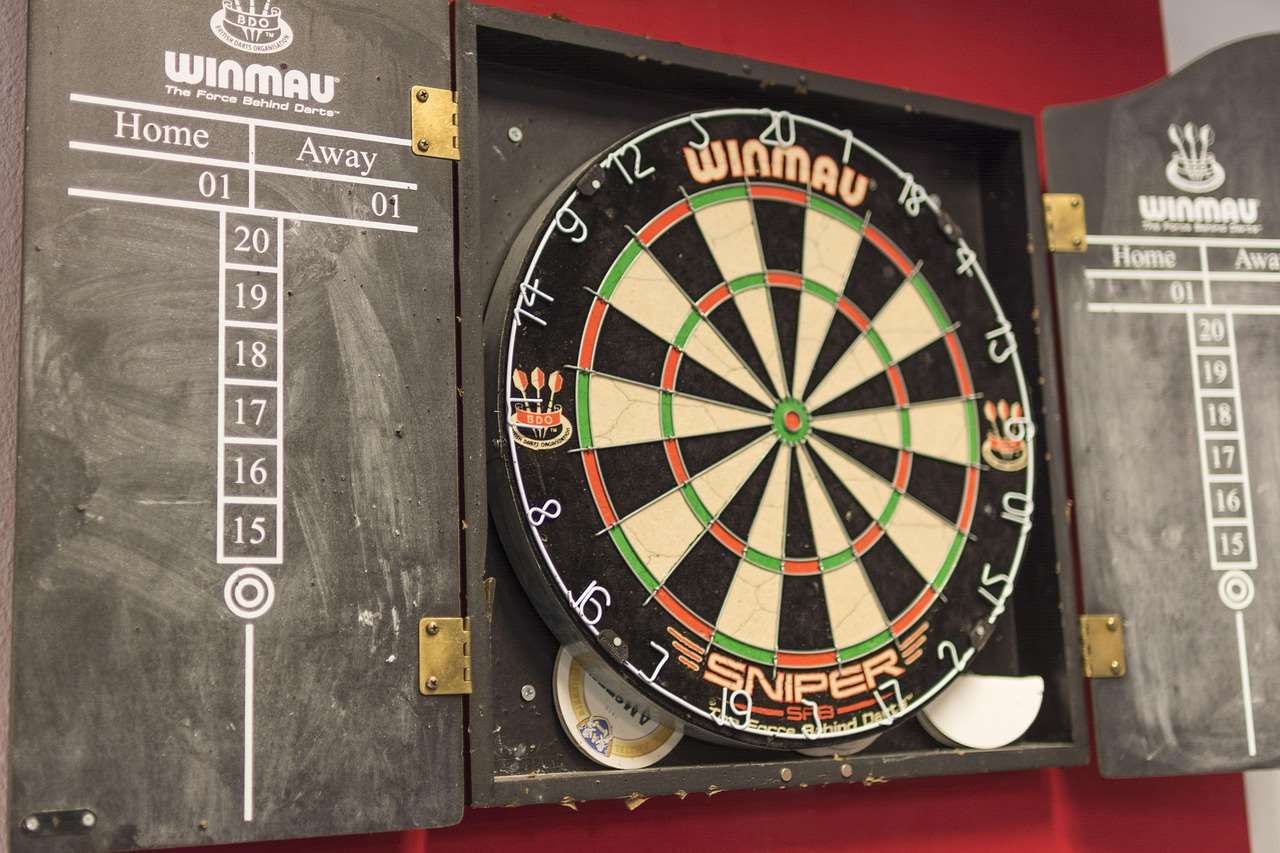Winning at team cricket darts involves a blend of understanding the rules, implementing a robust strategy, and mastering dart throwing techniques. This guide offers a comprehensive breakdown of the game, from the basics to advanced tactics, to help you and your team dominate the dartboard. Learn everything from scorekeeping nuances to team-based strategies to improve your game.
⚠️ Still Using Pen & Paper (or a Chalkboard)?! ⚠️
Step into the future! The Dart Counter App handles all the scoring, suggests checkouts, and tracks your stats automatically. It's easier than you think!
Try the Smart Dart Counter App FREE!Ready for an upgrade? Click above!
Understanding the Basics of Team Cricket Darts Rules
Team Cricket Darts is a popular variation of darts played between two teams. The primary objective is to be the first team to “close” all of the required numbers (usually 20, 19, 18, 17, 16, 15, and the bullseye) and have a lower or equal score than the opposing team. It’s a game of both offensive scoring and defensive blocking, making it strategically complex and exciting.
The Target Numbers
The standard target numbers in Cricket Darts are 20, 19, 18, 17, 16, 15, and the bullseye. Each of these numbers must be “closed” by hitting it three times. A single hit counts as one mark, a double counts as two, and a triple counts as three. The outer bullseye counts as a single, while the inner bullseye counts as two. Once a number is hit three times by a team, it’s considered “closed” for that team. 
Opening and Closing Numbers
To open a number, you need to hit it three times. To close a number, you need to hit it three times, but only after your team has already opened it. If your opponent has not opened the number, you can “score” on them. This means that if you hit the number more than three times while they haven’t opened it, the additional points you score are added to their score.
Team Cricket Darts Rules Strategy: Offense and Defense
The team cricket darts rules strategy is a delicate balance between scoring and defense. A well-rounded strategy involves closing numbers to prevent your opponent from scoring on them, while also racking up points on numbers that your opponents haven’t closed yet. Here are some key elements:
Prioritizing Target Numbers
Deciding which numbers to target first is crucial. Generally, starting with the higher numbers (20 and 19) is a good idea because they are easier to hit. However, if your opponent seems to be struggling with a specific number, you might consider targeting it early to score points while they are still trying to open it. Don’t forget to explore Darts Variants Fun Games too.
Scoring on Open Numbers
If your opponents haven’t closed a number, and you have, exploit it! Rack up as many points as possible on that number to build a lead. However, be mindful of your score. If you get too far ahead, your opponents might focus on closing numbers and preventing you from scoring, potentially catching up in the end.
Defensive Play: Blocking and Closing
Closing numbers is a defensive tactic that prevents your opponents from scoring on those numbers. If your opponents are racking up points on a specific number, prioritize closing it to shut them down. Closing numbers effectively shifts the momentum and forces your opponents to change their strategy. Remember the importance of focusing on your old dart games rules too.

Advanced Team Cricket Darts Strategy Techniques
Once you understand the basic team cricket darts rules strategy, you can start incorporating more advanced techniques to gain an edge over your opponents. These techniques involve predicting your opponent’s moves, manipulating the board, and utilizing team communication effectively.
Reading Your Opponent
Pay close attention to your opponent’s throwing style, tendencies, and target preferences. Are they consistently aiming for a particular number? Are they struggling with a specific section of the board? Use this information to anticipate their moves and adjust your strategy accordingly. If they are having trouble with the 18, for example, focus on scoring on that number while they struggle to open it.
Manipulating the Board
Manipulating the board involves strategically leaving certain numbers open to bait your opponents into targeting them. For example, you might leave the 15 open, knowing that your opponents will focus on scoring on it. Meanwhile, you can concentrate on closing other numbers and building a lead on numbers they aren’t paying attention to. Consider the forgotten pub dart games to add more variety to your gameplay.
Effective Team Communication
Communication is key in team cricket darts. Discuss your strategy with your teammate, share observations about your opponents, and coordinate your target numbers. Clear communication ensures that you are both on the same page and working towards the same goal. For instance, one player can focus on closing numbers while the other concentrates on scoring.
Mastering Dart Throwing Techniques for Team Cricket Darts
Even the best team cricket darts rules strategy is useless if you can’t hit your targets consistently. Mastering dart throwing techniques is essential for success. Here are some tips to improve your accuracy and consistency:
Stance and Grip
Your stance should be comfortable and balanced, allowing you to maintain stability throughout your throw. Experiment with different stances to find what works best for you. Your grip should be firm but relaxed, allowing you to control the dart without putting too much tension on your hand. Consider using the history of darts games uk to understand traditional grips.
The Throwing Motion
The throwing motion should be smooth and consistent, starting with your elbow and following through with your wrist. Avoid jerky movements or unnecessary tension. Focus on releasing the dart at the same point each time to ensure accuracy. Practice your throwing motion regularly to develop muscle memory.

Aiming Techniques
There are several different aiming techniques you can use. Some players prefer to aim directly at the target, while others use a more indirect approach. Experiment with different techniques to find what works best for you. Visualizing the trajectory of the dart can also help improve your accuracy. Remember to analyze dart games before 501 invented for historical aiming strategies.
Practice Drills to Enhance Your Team Cricket Darts Strategy
Consistent practice is essential for improving your team cricket darts skills. Here are some effective practice drills that will help you refine your throwing technique, improve your accuracy, and develop your strategic thinking:
Target Practice
Set up a practice routine where you focus on hitting specific target numbers. Start by practicing on the 20 and 19, as these are the most commonly targeted numbers in Cricket Darts. Gradually work your way through the other numbers, focusing on improving your accuracy on each one. Include the bullseye in your practice sessions.
Closing Drill
Practice closing numbers by throwing three darts at each target number until you close it. This drill will help you develop the consistency and accuracy needed to quickly close numbers during a game. Focus on minimizing the number of darts it takes you to close each number.
Scoring Drill
Simulate a game scenario by throwing darts at open numbers to score points. This drill will help you improve your ability to capitalize on scoring opportunities and build a lead over your opponents. Focus on maximizing the points you score with each throw.

Game Simulation
Play practice games against your teammate or other opponents to simulate real game conditions. This will help you develop your strategic thinking, improve your decision-making skills, and refine your overall game plan. Experiment with different strategies and tactics to see what works best for you. Playing actual games will allow you to apply your team cricket darts rules strategy in a competitive environment.
Team Composition and Roles in Team Cricket Darts
The composition of your team can significantly impact your success. Ideally, a team cricket darts should have players with complementary strengths and skills. Here are some common roles that players can fulfill within a team:
The Consistent Scorer
This player excels at consistently hitting high-scoring numbers and racking up points on open targets. They are reliable and accurate, providing a solid foundation for the team’s scoring potential. The consistent scorer is responsible for building a lead and putting pressure on the opposing team.
The Defensive Closer
This player is skilled at closing numbers and preventing the opponents from scoring. They are strategic and patient, focusing on shutting down the opposing team’s scoring opportunities. The defensive closer is responsible for controlling the board and shifting the momentum in the team’s favor.
The All-Around Player
This player possesses a well-rounded skillset, capable of both scoring and closing numbers effectively. They are adaptable and versatile, able to adjust their strategy based on the game’s situation. The all-around player provides flexibility and balance to the team.

Common Mistakes to Avoid in Team Cricket Darts
Even experienced players can fall victim to common mistakes that can cost them the game. Avoiding these pitfalls is crucial for success in team cricket darts. Here are some mistakes to be mindful of:
Ignoring the Score
One of the biggest mistakes is focusing solely on closing numbers and neglecting the overall score. Remember, you need to close all the required numbers *and* have a lower or equal score than your opponents to win. Always keep track of the score and adjust your strategy accordingly. Consider looking into obscure dartboard games list for ideas on keeping score.
Over-Aggression
Being overly aggressive and focusing solely on scoring can leave you vulnerable to defensive plays by your opponents. Don’t get too caught up in racking up points that you forget to close numbers and protect your lead. Balance your offensive and defensive strategies to maintain control of the game.
Poor Communication
Lack of communication between teammates can lead to confusion, missed opportunities, and ineffective strategies. Always communicate clearly with your teammate about your target numbers, your observations about your opponents, and your overall game plan.
Conclusion: Mastering Team Cricket Darts
Mastering team cricket darts rules strategy is a journey that requires dedication, practice, and a keen understanding of the game. By understanding the rules, implementing effective strategies, mastering dart throwing techniques, and avoiding common mistakes, you can elevate your game and lead your team to victory. Remember to communicate effectively, adapt to your opponents’ moves, and always stay focused on the overall goal. Practice regularly, analyze your performance, and continuously refine your strategy. With consistent effort and the right approach, you can become a formidable force in the world of team cricket darts. Now, grab your darts, gather your team, and put these strategies to the test! Consider researching further for more information on ancient dart throwing games!
Hi, I’m Dieter, and I created Dartcounter (Dartcounterapp.com). My motivation wasn’t being a darts expert – quite the opposite! When I first started playing, I loved the game but found keeping accurate scores and tracking stats difficult and distracting.
I figured I couldn’t be the only one struggling with this. So, I decided to build a solution: an easy-to-use application that everyone, no matter their experience level, could use to manage scoring effortlessly.
My goal for Dartcounter was simple: let the app handle the numbers – the scoring, the averages, the stats, even checkout suggestions – so players could focus purely on their throw and enjoying the game. It began as a way to solve my own beginner’s problem, and I’m thrilled it has grown into a helpful tool for the wider darts community.